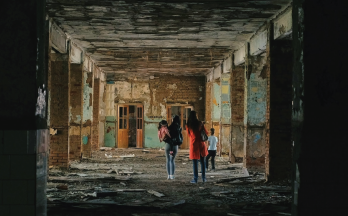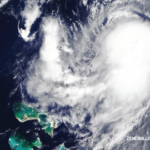
Vadim Zakharishchev / shutterstock.com
CHICAGO—“You never know when things might happen,” began Kamala M. Nola PharmD, MS, vice chair and professor in the Department of Pharmacy Practice at Lipscomb College of Pharmacy, Nashville, at the 2018 ACR/ARHP Annual Meeting.
Dr. Nola explained that on May 1, 2010, the Arthritis Foundation Arthritis Walk held on her university’s campus was moved indoors because of rain. The rain continued, and continued. Nashville’s interstates flooded, hundreds of homes were destroyed and lives were lost. Debris was spread for miles, and the city was filled with the smell of mold and sludge. Nashville experienced a disaster unlike any the city had ever seen.
Although always catastrophic, natural disasters may, like in Nashville, creep into a geographic area, or they may occur in an instant as in a tsunami, earthquake or tornado. And of course, disasters may be man-made or result from a disease outbreak as well.
Many organizations step up during disasters: emergency responders, the military, public health agencies, community organizations and healthcare systems (professional and nonprofits). Community organizations play an important role in disasters when the government is overtaxed.
The Government
The federal healthcare system coordinates the medical disaster response through the National Disaster Medical System, which includes the Departments of Health and Human Services, Homeland Security, Defense and Veterans Affairs. Their health professionals are activated during times of potential and actual catastrophic events. Recently, the system has been working at capacity to meet the needs of survivors of a steady stream of disasters.
The U.S. also maintains a strategic national stockpile of medical supplies and medications for use during disasters. Historically the stockpile has been administered by the Centers for Disease Control and Prevention (CDC), but it is now maintained under the Office of the Assistant Secretary for Preparedness and Response. Most states also have one or two pharmacists assigned to the important task of helping coordinate the national stockpile supply within a state to ensure it is ready to be deployed at a moment’s notice.
Healthcare Providers & Policy
Many healthcare providers regularly perform health outreach, and this experience can serve as practice for disaster response. For example, a group of students from Lipscomb University College of Pharmacy coordinated with Vanderbilt University to immunize approximately 14,000 individuals in a single event. Such activities provide an opportunity to practice what a response might look like during a major catastrophic event. These activities reveal the process as well as the various roles and responsibilities.
Healthcare providers not only serve during a natural disaster, they can help address many problems that appear in the aftermath of the disaster as well, such as caring for evacuees. Evacuees often have no accessible medical or medication history. Because many states recognize the difficulties patients face in obtaining medications during times of disaster, governors often suspend Board of Pharmacy rules so pharmacists can fill medication requests with very little information. State lawmakers are also increasingly passing legislation to address the issue in advance of a disaster. The laws detail how much medication to give a patient and direct who should pay for the medication.
Dr. Nola concluded that disasters should be addressed with policies at the federal, state, local and practice level. These policies should reflect the shifting needs of the population, and should focus on those at greatest risk. With medical practices, policies should consider business needs, patient needs and personal needs.
